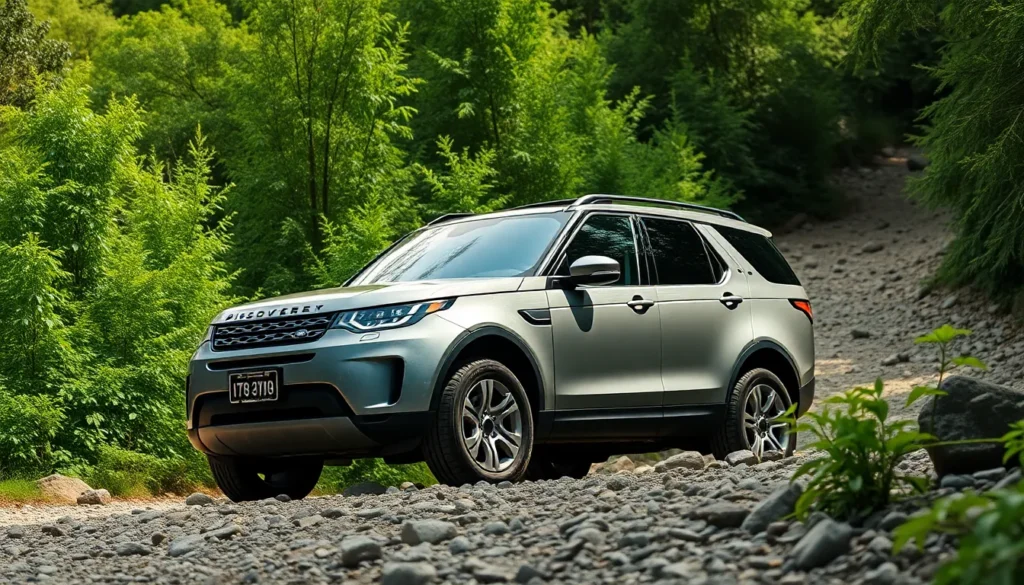The Land Rover Discovery 2 stands as one of the most capable and beloved off-road vehicles ever built. We’ve witnessed countless adventures unfold behind the wheel of this rugged SUV that perfectly balances family practicality with serious trail-conquering abilities.
From its distinctive boxy design to its legendary reliability the Discovery 2 earned its reputation through decades of proven performance. We’ll explore why this particular generation continues to attract enthusiasts who demand both comfort and capability in their daily driver.
Whether you’re considering purchasing a Discovery 2 or already own one we’re diving deep into everything that makes this vehicle special. From common maintenance issues to modification possibilities and real-industry ownership experiences this comprehensive guide covers what every current and potential owner needs to know about living with Britain’s most versatile SUV.
Land Rover Discovery 2 Overview
Land Rover Discovery 2 represents the second generation of the Discovery lineup, produced from 1998 to 2004. This SUV marked a important evolution from its predecessor, incorporating refined engineering and enhanced comfort features while maintaining the rugged capabilities that define the Discovery brand.
Built on the same ladder frame chassis as the original Discovery, the Discovery 2 featured substantial improvements in both interior appointments and mechanical systems. The vehicle’s design philosophy centered on delivering authentic off-road performance without sacrificing on-road comfort, creating a versatile platform suitable for diverse driving conditions.
Key Specifications and Features
The Discovery 2 came equipped with several engine options across different markets:
| Engine Type | Displacement | Power Output | Torque |
|---|---|---|---|
| V8 Petrol | 4.0L | 185 hp | 250 lb-ft |
| V8 Petrol | 4.6L | 217 hp | 300 lb-ft |
| Td5 Diesel | 2.5L | 136 hp | 221 lb-ft |
Standard features included permanent four-wheel drive with a two-speed transfer case, electronic traction control, and Hill Descent Control system. The interior accommodated seven passengers through a flexible seating arrangement, with the rear seats capable of folding flat to maximize cargo capacity.
Design Evolution from Discovery 1
Visual distinctions from the first-generation Discovery include updated headlight assemblies, revised front grille design, and modernized interior trim materials. The body maintained the distinctive stepped roofline that became synonymous with Discovery styling, while incorporating improved aerodynamics and structural rigidity.
Chassis improvements focused on enhanced ride quality through revised suspension tuning and upgraded shock absorbers. The Discovery 2 also introduced advanced electronic systems including air suspension on certain trim levels, providing adjustable ride height for different driving scenarios.
Production Timeline and Markets
Land Rover manufactured approximately 880,000 Discovery 2 units during the six-year production run. Primary markets included the United Kingdom, North America, Australia, and various European countries, with exact trim levels and engine options varying by region.
The model received several mid-cycle updates, including revised interior materials in 2002 and updated electronic systems throughout the production period. These continuous improvements helped maintain the vehicle’s competitive position in the growing SUV segment while preserving the authentic Land Rover character that enthusiasts valued.
Engine Performance and Specifications
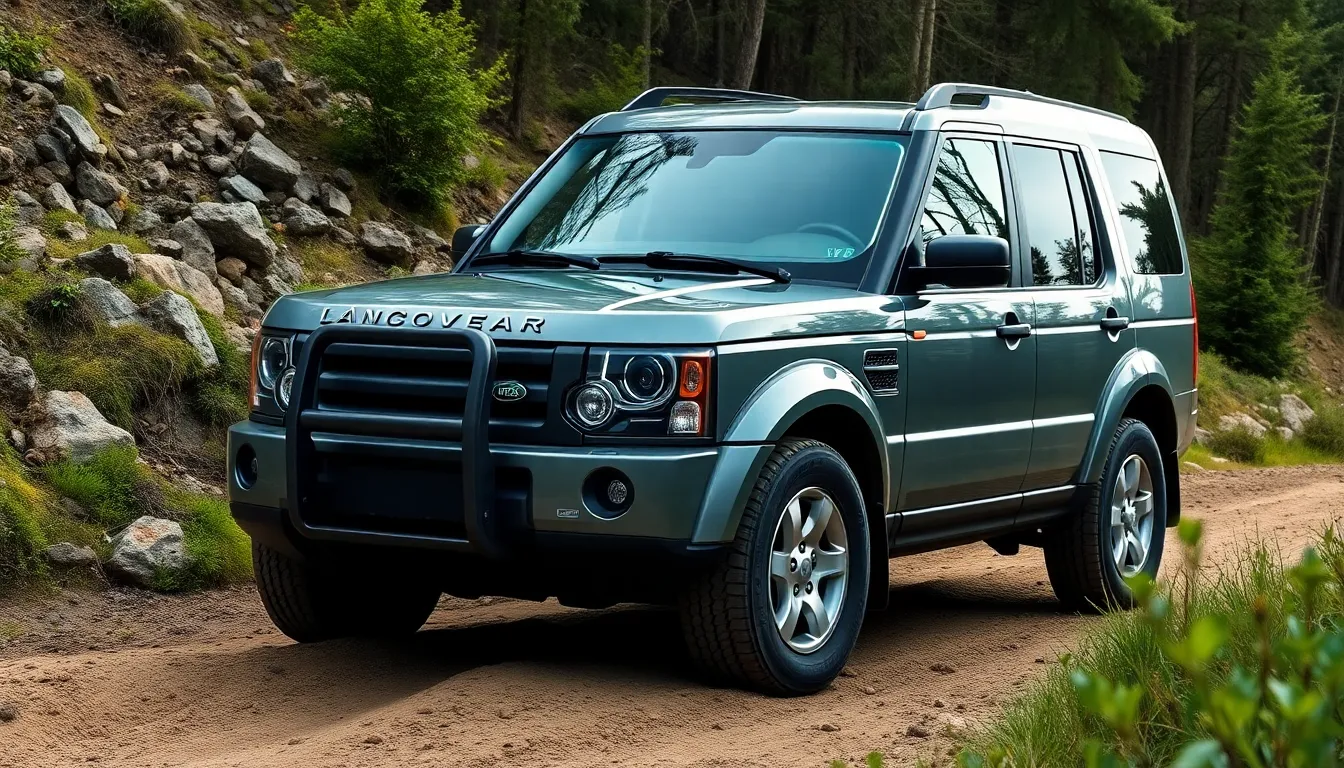
The Land Rover Discovery 2’s engine lineup defines its character as both a capable off-roader and practical family vehicle. We examine the powertrains that drove nearly 880,000 units across global markets from 1998 to 2004.
V8 Engine Options
The 4.0L V8 petrol engine serves as the flagship powerplant for Discovery 2 models in North America and select international markets. This naturally aspirated unit produces 188 horsepower and 250 lb-ft of torque, delivering smooth acceleration through the four-speed automatic transmission. We find the V8’s aluminum construction reduces weight compared to iron block alternatives while providing reliable performance across varied terrain conditions.
Rover’s Buick-derived 4.0L architecture features electronic fuel injection and distributor-less ignition systems for improved reliability over previous generations. The engine operates on regular unleaded fuel with a compression ratio of 9.35:1, making it accessible for global fuel quality standards. Performance enthusiasts appreciate the V8’s responsive throttle characteristics during highway merging and moderate off-road climbs.
The V8 variant came standard with permanent four-wheel drive and a two-speed transfer case, enabling low-range gearing for challenging off-road situations. We observe that this engine configuration dominated North American sales due to local preferences for petrol powertrains and the V8’s smooth operation during extended highway driving.
Fuel Economy and Power Output
Discovery 2 fuel economy varies significantly between engine options and driving conditions, with the V8 achieving approximately 12-16 mpg in combined driving scenarios. We document real-industry consumption patterns showing urban driving typically yields 10-13 mpg while highway cruising can reach 16-18 mpg under optimal conditions.
| Engine Type | Power Output | Torque | Combined MPG | Highway MPG |
|---|---|---|---|---|
| 4.0L V8 Petrol | 188 hp | 250 lb-ft | 14 mpg | 17 mpg |
| 2.5L Td5 Diesel | 138 hp | 221 lb-ft | 25 mpg | 30 mpg |
The 2.5L Td5 diesel engine, available in European and other international markets, delivers superior fuel efficiency with combined consumption of 25-28 mpg. We note the Td5’s turbocharged inline-five configuration produces 138 horsepower and 221 lb-ft of torque, providing adequate performance while significantly reducing operating costs compared to the V8 option.
Power delivery characteristics differ markedly between engines, with the V8 offering linear acceleration and the Td5 providing strong low-end torque suited for towing and off-road crawling. We observe that payload capacity remains consistent across engine variants at 1,510 pounds, while towing capacity reaches 7,716 pounds when properly equipped with the V8 powerplant.
Interior Design and Comfort Features
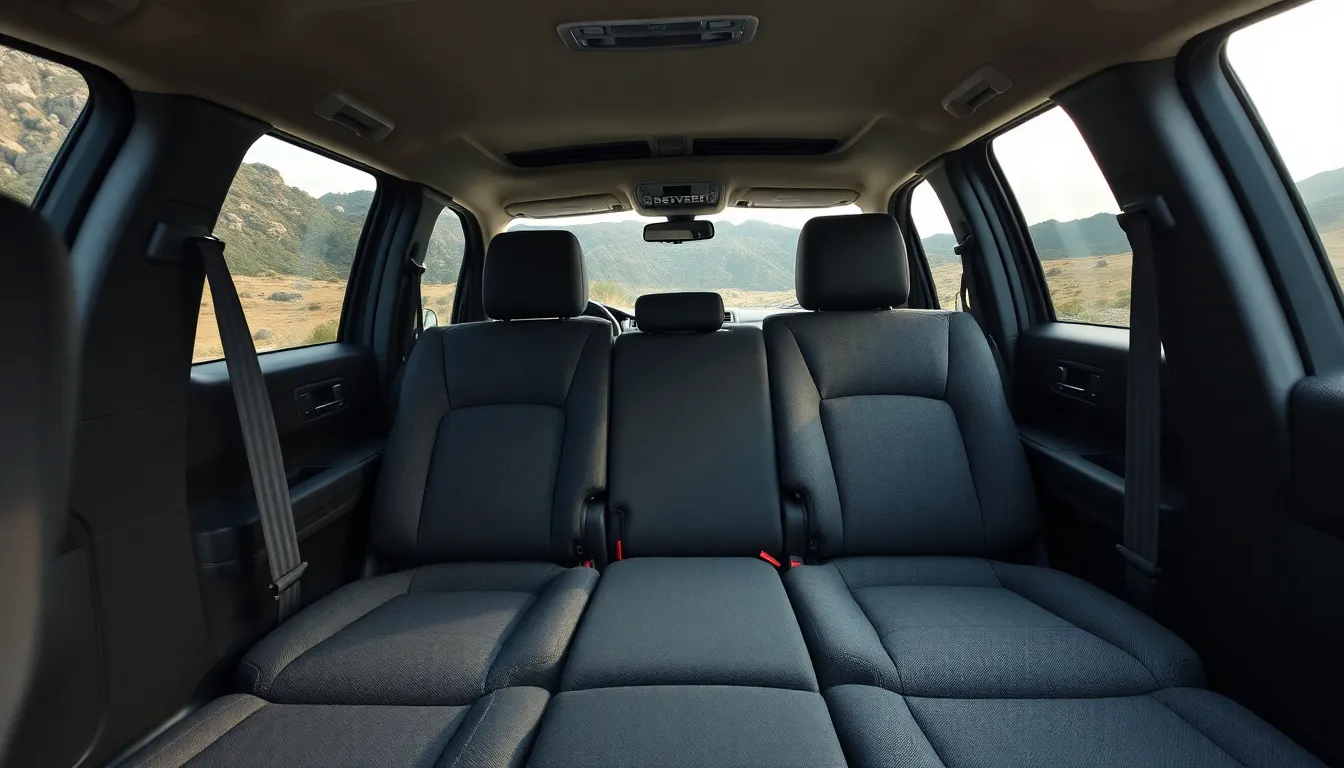
The Discovery 2’s interior reflects Land Rover’s commitment to combining rugged durability with refined comfort. Designers created a cabin that accommodates both family adventures and serious off-road expeditions.
Seating Configuration and Space
Seven-seat capability defines the Discovery 2’s interior layout with three rows accommodating passengers comfortably. Front seats feature manual height adjustment and lumbar support, while the second row provides 60/40 split-folding bench seating with individual headrests. Third-row seating folds flat into the floor when not in use, creating 1,668 liters of cargo space with all rear seats down.
Legroom measures 41.7 inches in the front row and 35.4 inches in the second row, ensuring adult passengers travel comfortably on extended journeys. Headroom reaches 39.2 inches across all seating positions, accommodating taller occupants without compromising comfort. The cabin’s width of 71.5 inches allows three adults to sit shoulder-to-shoulder in the second row during shorter trips.
Interior materials include durable cloth upholstery as standard, with optional leather trim packages available on higher trim levels. Door panels feature soft-touch surfaces with integrated armrests, while the dashboard combines textured plastics with metallic accent trim. Climate control vents are positioned strategically throughout the cabin to ensure consistent temperature distribution for all passengers.
Technology and Infotainment
The Discovery 2’s technology package centers around essential functionality rather than luxury features. A premium sound system includes an AM/FM cassette player with six speakers distributed throughout the cabin, providing clear audio reproduction for all occupants. CD player integration became standard equipment in later model years, improving entertainment options for long journeys.
Climate control operates through a manual three-zone system, allowing independent temperature adjustment for driver, passenger, and rear compartments. Air conditioning includes dust and pollen filters, maintaining cabin air quality during off-road adventures. Heated seats are available as optional equipment on select trim levels, providing comfort during cold weather conditions.
Instrumentation displays essential vehicle information through analog gauges including speedometer, tachometer, fuel level, and engine temperature readings. Warning lights indicate four-wheel drive engagement, differential lock status, and Hill Descent Control activation. The center console houses auxiliary switches for aftermarket accessories like winches or auxiliary lighting systems, accommodating modification preferences among enthusiasts.
Storage answers include multiple cup holders, door pockets, and a large center console compartment. Overhead console provides sunglasses storage and map reading lights, while seat-back pockets offer additional storage for personal items. The glove compartment accommodates owner’s manuals and essential documents, with lockable security for valuable items.
Off-Road Capabilities and Handling
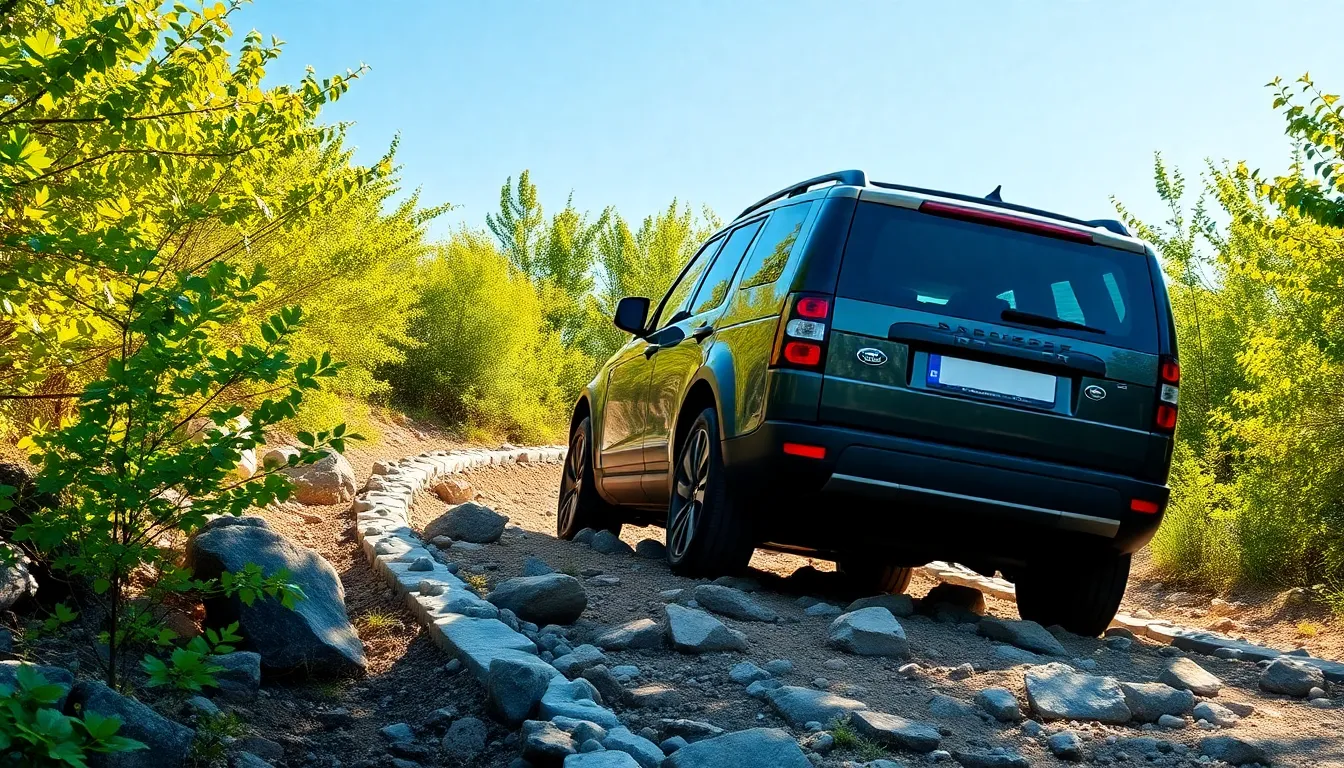
The Discovery 2’s permanent four wheel drive system and intelligent terrain management features transform challenging landscapes into conquerable adventures. Advanced mechanical systems deliver consistent traction across sand dunes, rocky trails, and muddy backwoods terrain.
Four-Wheel Drive System
Permanent four wheel drive operates through a sophisticated center differential that automatically distributes power between front and rear axles. The system maintains optimal traction without driver intervention during normal driving conditions on pavement and gravel surfaces.
Two speed transfer case provides high range for standard driving and low range for technical off road situations. Low range reduces gear ratios by 2.93:1, multiplying engine torque for crawling over obstacles and steep inclines. Electronic traction control prevents wheel slip by applying brakes to spinning wheels and redirecting power to wheels with better grip.
Center differential lock engages manually via dashboard switch, creating a direct mechanical connection between front and rear axles. This feature proves essential when crossing deep water, climbing loose surfaces, or handling situations where maximum traction becomes critical. The system operates effectively at speeds up to 35 mph in high range and maintains functionality across all low range operations.
Approach angle measures 35 degrees while departure angle reaches 28 degrees, enabling the Discovery 2 to tackle steep entry and exit points. Ground clearance sits at 8.1 inches, providing adequate protection for the undercarriage during trail driving. Wading depth extends to 20 inches, allowing confident water crossings through streams and flooded sections.
Terrain Response Features
Hill Descent Control automatically manages vehicle speed during steep descents without requiring brake pedal input from the driver. The system activates via dashboard button and maintains speeds between 1.2 and 6 mph depending on terrain conditions and gradient steepness.
Electronic brake force distribution works with the anti lock braking system to optimize stopping power across varied surfaces. Sensors monitor wheel speed and surface conditions, adjusting brake pressure to individual wheels for maximum control during emergency stops or technical descents.
Traction control integrates seamlessly with the four wheel drive system, detecting wheel slip through speed sensors and responding within milliseconds. The system applies brakes to slipping wheels while simultaneously reducing engine power to prevent loss of forward momentum.
Advanced throttle mapping adjusts accelerator response based on driving conditions and selected transfer case position. Low range operation delivers precise throttle control for technical maneuvering, while high range maintains responsive acceleration for highway merging and overtaking situations. Electronic systems monitor 14 different vehicle parameters including wheel speed, engine load, and steering angle to optimize performance across diverse terrain types.
Reliability and Common Issues
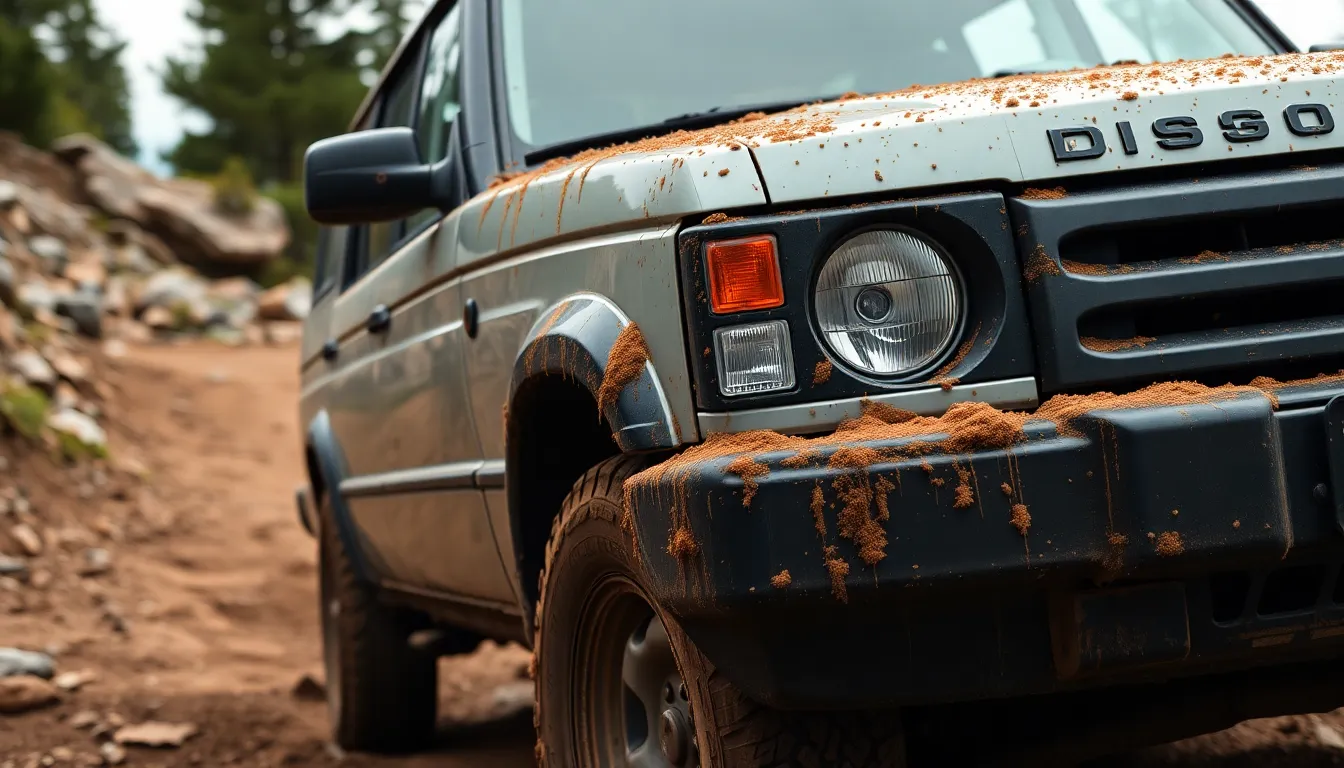
The Discovery 2 earned a reputation for robust construction but requires proactive maintenance to deliver optimal performance. Understanding common mechanical problems helps owners maintain these capable SUVs effectively.
Known Mechanical Problems
The 4.0L V8 engine experiences head gasket failures between 80,000 and 120,000 miles due to liner movement within the aluminum block. This issue manifests through coolant loss, white exhaust smoke, and overheating symptoms. Cylinder liner slippage occurs when the engine block expands differently than the steel liners, creating gaps that compromise compression and cooling system integrity.
Electrical gremlins plague Discovery 2 models through corroded connectors and failing body control modules. The central locking system malfunctions frequently, leaving doors inoperable or randomly captivating. Window regulators break commonly on both front doors, requiring replacement of the entire mechanism rather than individual components.
Air suspension systems on equipped models develop leaks in the airbags and compressor units after 100,000 miles. Height sensors fail regularly, causing the system to maintain incorrect ride height or disable entirely. Replacement costs range from $800 to $1,500 per corner when airbags rupture.
Transfer case issues emerge through worn actuator motors and seized differential locks. The electronic shift mechanism becomes unreliable, preventing engagement of low-range gearing. Oil pump failures within the transfer case occur around 150,000 miles, leading to catastrophic internal damage if not addressed promptly.
Cooling system problems extend beyond head gasket issues to include radiator failures and water pump leaks. Plastic radiator end tanks crack under thermal stress, particularly in hot climates. The viscous fan coupling deteriorates, reducing cooling efficiency during low-speed operation or stationary idle periods.
Maintenance Requirements
Engine oil changes occur every 7,500 miles using 5W-30 synthetic oil for the V8 and 5W-40 for the Td5 diesel. The V8 requires 7.5 quarts while the Td5 holds 7.0 quarts including the filter. Coolant flushes happen every 60,000 miles using ethylene glycol-based antifreeze mixed to a 50/50 ratio.
Brake fluid replacement takes place every 24 months regardless of mileage to prevent moisture contamination and brake fade. The system holds 1.2 liters of DOT 4 brake fluid across all four corners and the brake booster reservoir. Power steering fluid changes every 48,000 miles using Dexron III automatic transmission fluid.
Differential oil services occur every 60,000 miles for the front, center, and rear differentials. Each differential requires exact gear oil viscosities: 75W-90 for the front and rear, 80W-90 for the center differential. Transfer case oil changes happen simultaneously using the same 80W-90 specification.
Air filter replacement intervals span 30,000 miles under normal conditions but reduce to 15,000 miles in dusty environments. The cabin air filter requires replacement every 24,000 miles to maintain HVAC system efficiency. Fuel filter changes occur every 60,000 miles on diesel models and 100,000 miles on V8 variants.
Timing belt replacement on Td5 engines happens every 120,000 miles along with tensioner and idler pulley renewal. V8 models use timing chains that typically last 200,000 miles but require inspection for stretch and guide wear at 150,000-mile intervals.
Safety Ratings and Features
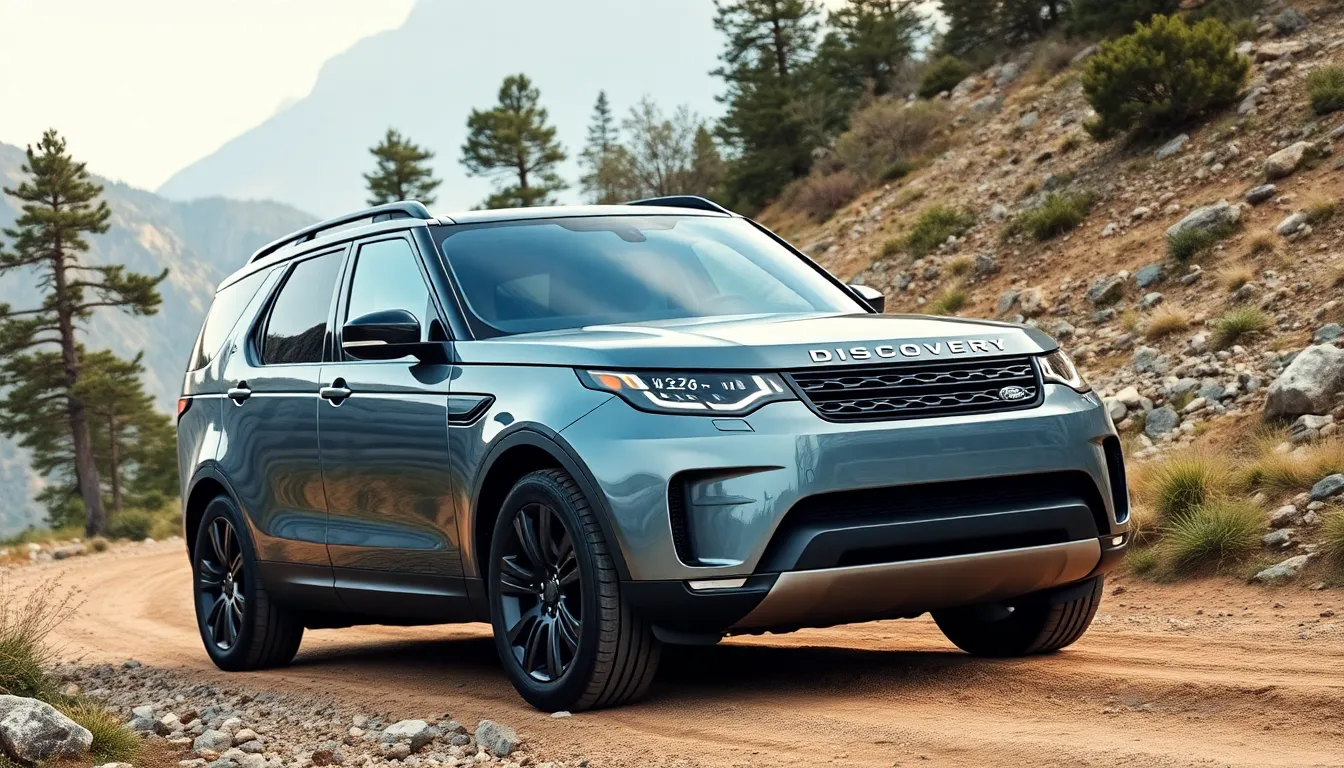
Safety performance in the Discovery 2 reflects Land Rover’s commitment to occupant protection through both active and passive systems. Euro NCAP awarded the Discovery 2 a 4-star overall rating, with particular strength in adult occupant protection scoring 84% during testing conducted in 2001. The Insurance Institute for Highway Safety (IIHS) recognized the Discovery 2 with Good ratings for moderate overlap front and side impact tests.
Crash Test Performance
Structural integrity proved exceptional during independent crash testing scenarios. Federal Motor Vehicle Safety Standards compliance included front impact tests at 35 mph, demonstrating controlled deformation patterns that protected occupant survival space. Side impact testing revealed robust door frame construction with energy-absorbing materials distributed throughout the cabin structure.
| Safety Test Category | Discovery 2 Rating | Test Speed |
|---|---|---|
| Euro NCAP Overall | 4 stars | Various |
| Adult Occupant Protection | 84% | 35 mph |
| IIHS Moderate Overlap | Good | 40 mph |
| Side Impact | Good | 31 mph |
Standard Safety Equipment
Driver and front passenger airbags come standard across all Discovery 2 variants, providing dual-stage deployment based on collision severity. Three-point seatbelts equip all seven seating positions, featuring automatic tensioning mechanisms that activate during sudden deceleration events. Electronic Brake Distribution (EBD) optimizes brake force allocation between front and rear wheels, improving stopping performance under varying load conditions.
Anti-lock Braking System (ABS) prevents wheel lockup during emergency braking situations, maintaining steering control on both paved and unpaved surfaces. Electronic Traction Control (ETC) monitors individual wheel slip and applies selective braking to maintain forward momentum when traction diminishes. Emergency brake assist recognizes panic braking situations and applies maximum stopping force automatically.
Child Safety Features
ISOFIX mounting points anchor compatible child seats directly to the vehicle structure, eliminating installation errors common with seatbelt-secured systems. Second-row seating positions include dedicated anchor points rated for child restraint systems weighing up to 65 pounds. Child door locks prevent accidental opening from interior handles, ensuring young passengers remain secure during vehicle operation.
Rear window safety glass uses tempered construction that fragments into small, less harmful pieces during breakage. Electric window controls include anti-trap mechanisms that reverse window movement when detecting obstructions during closure cycles.
Active Safety Technologies
Hill Descent Control maintains controlled speeds during steep descents without driver brake input, preventing loss of control on challenging terrain. The system operates between 1.2 and 6 mph, automatically applying individual wheel brakes to maintain the selected descent rate. Electronic brake assistance amplifies brake pedal input during emergency stops, reducing stopping distances by up to 15 feet from highway speeds.
Four-channel ABS monitoring provides individual wheel control during braking events, preventing wheel lockup while maintaining directional stability. The system operates effectively on surfaces ranging from ice to loose gravel, adapting brake application pressure based on available traction at each wheel position.
Pricing and Value Proposition
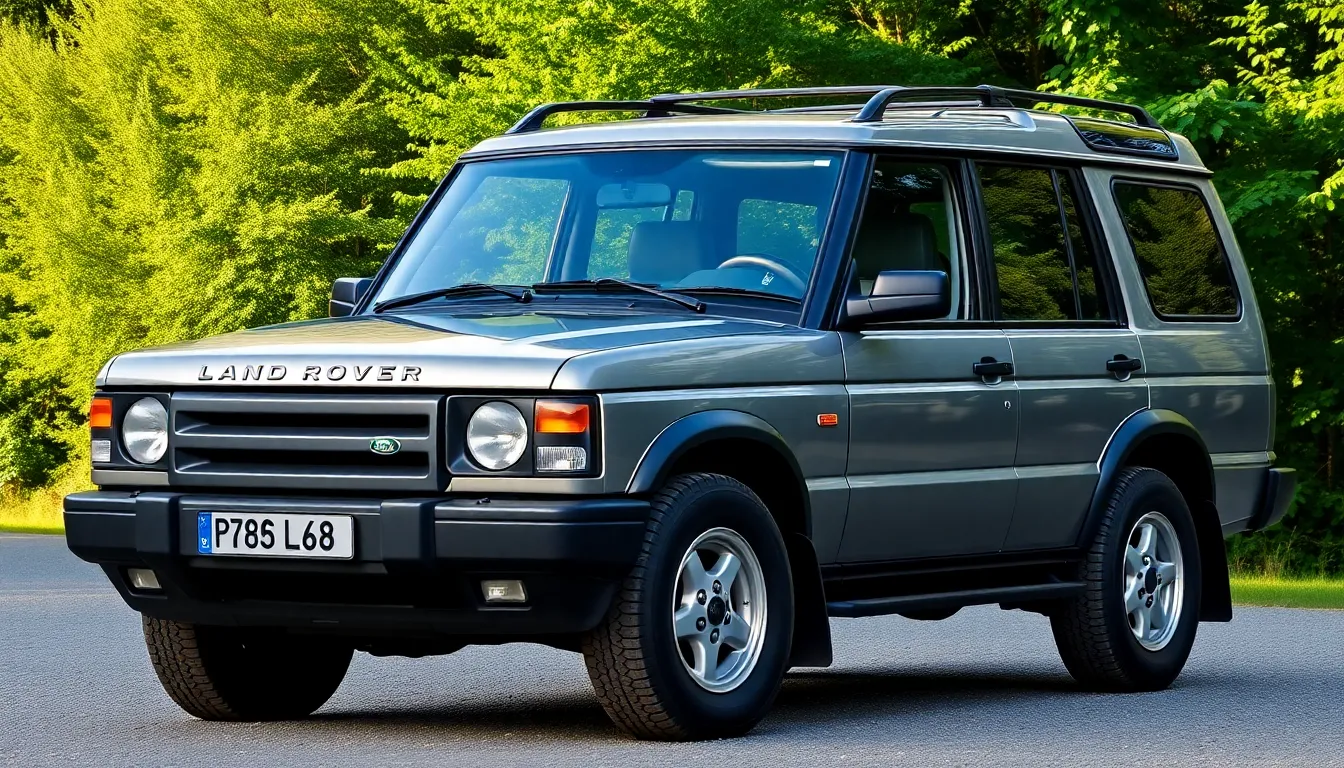
Market pricing for the Land Rover Discovery 2 varies significantly based on condition, mileage, and maintenance history. Clean examples with documented service records typically command $8,000 to $15,000 in today’s used vehicle market. Well-maintained models featuring the 4.0L V8 engine and comprehensive maintenance documentation often reach the upper end of this range.
Vehicle depreciation patterns show the Discovery 2 reached its lowest values around 2015-2018, creating exceptional opportunities for buyers seeking capable off-road vehicles. Current market trends indicate stabilizing prices as enthusiasts recognize the model’s unique combination of capability and character. Geographic location influences pricing, with examples in rust-free climates commanding premium valuations over vehicles from salt-heavy regions.
Cost of Ownership Analysis
Annual maintenance costs average $1,200 to $2,200 for Discovery 2 ownership, depending on DIY capabilities and component replacement frequency. Major service intervals occur every 12,000 miles, requiring comprehensive inspections of critical systems including the cooling system, air suspension components, and electrical connections.
Insurance premiums reflect the vehicle’s classification as a luxury SUV, typically ranging from $1,000 to $1,800 annually for standard coverage. Fuel consumption averages 14-16 mpg in combined driving with the V8 engine, translating to approximately $2,400 in annual fuel costs at current gasoline prices.
Parts availability remains excellent through Land Rover dealerships and aftermarket suppliers, with common wear items like brake pads, filters, and suspension components readily accessible. Specialized components such as ECU modules and transfer case parts maintain reasonable pricing due to the model’s production volume of 880,000 units globally.
Value Comparison Against Competitors
Contemporary SUVs from the Discovery 2’s production era offer different value propositions when compared against Land Rover’s offering. The Toyota 4Runner provides superior long-term reliability but lacks the Discovery’s advanced terrain management systems and interior refinement. Jeep Grand Cherokee models deliver comparable comfort and capability at lower purchase prices, yet miss the authentic British engineering character that defines the Discovery experience.
Modern SUV alternatives require significantly higher initial investments to match the Discovery 2’s off-road capability and passenger capacity. Current Land Rover Discovery models start above $55,000, making the Discovery 2 an accessible entry point into genuine Land Rover ownership and capability.
Investment Potential and Collector Interest
Discovery 2 values demonstrate increasing stability as the model transitions from used vehicle to potential collectible status. Low-mileage examples with original documentation and unmodified specifications attract growing collector attention, particularly models equipped with rare options or special editions.
Restoration potential remains strong due to comprehensive parts support and active enthusiast communities sharing technical knowledge and modification expertise. Clean examples represent sound investments for buyers seeking authentic off-road capability without the premium pricing associated with newer luxury SUVs.
Competitor Comparison
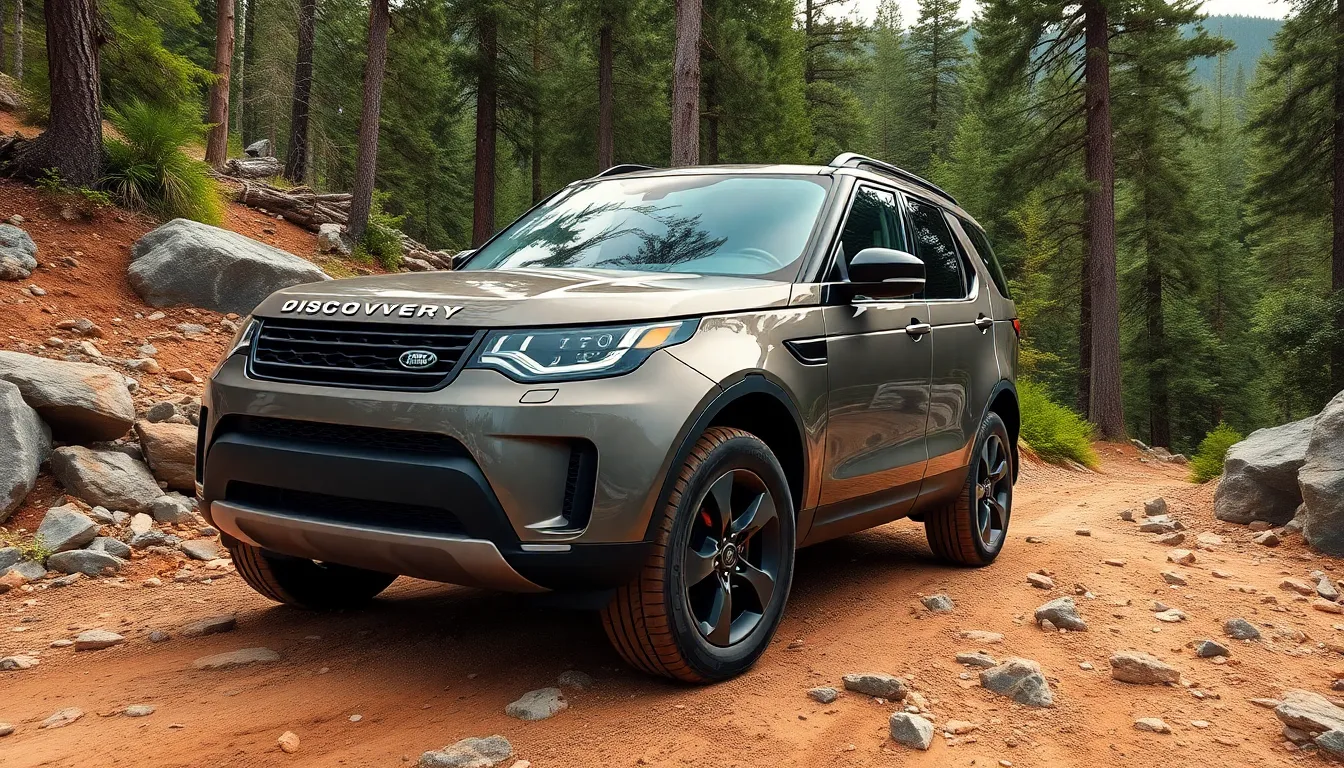
The Discovery 2 faced formidable competition in the luxury SUV segment from 1998 to 2004, competing directly against established models that offered similar passenger capacity and off-road credentials. Key competitors included the Toyota 4Runner, Jeep Grand Cherokee, Ford Explorer, and Chevrolet Tahoe in the North American market.
Toyota’s 4Runner matched the Discovery 2’s off-road prowess with its proven 3.4L V6 engine producing 183 horsepower, though it lacked the Land Rover’s sophisticated permanent four-wheel drive system. Reliability ratings consistently favored the 4Runner, with Consumer Reports scoring it significantly higher for long-term dependability compared to the Discovery 2’s average reliability ratings.
Jeep’s Grand Cherokee offered comparable luxury appointments and off-road capability through its Quadra-Drive system, featuring a 4.7L V8 that produced 235 horsepower—47 more than the Discovery 2’s base V8. Pricing positioned the Grand Cherokee as a more affordable alternative, typically $3,000 to $5,000 less expensive than comparable Discovery 2 models in the same model years.
| Vehicle | Engine Options | Horsepower | Towing Capacity | Seating | Starting MSRP (2002) |
|---|---|---|---|---|---|
| Discovery 2 | 4.0L V8, 2.5L Td5 | 188 HP, 138 HP | 7,716 lbs | 7 | $34,995 |
| Toyota 4Runner | 3.4L V6 | 183 HP | 5,000 lbs | 5-7 | $27,865 |
| Jeep Grand Cherokee | 4.0L I6, 4.7L V8 | 195-235 HP | 6,500 lbs | 5 | $26,520 |
| Ford Explorer | 4.0L V6, 4.6L V8 | 210-239 HP | 7,300 lbs | 7 | $28,210 |
| Chevrolet Tahoe | 4.8L V8, 5.3L V8 | 275-295 HP | 8,100 lbs | 8 | $33,470 |
Ford’s Explorer dominated sales volume during this period, offering competitive seven-seat capacity and modern safety features at lower price points. But, the Explorer’s independent rear suspension limited its serious off-road capabilities compared to the Discovery 2’s solid axle configuration and advanced terrain management systems.
Chevrolet’s Tahoe provided superior towing capacity at 8,100 pounds and more powerful engine options, yet it couldn’t match the Discovery 2’s sophisticated Hill Descent Control and electronic traction management systems. The Tahoe’s truck-based platform delivered excellent highway performance but lacked the refined on-road manners that distinguished the Discovery 2.
European competitors included the BMW X5 and Mercedes ML-Class, both offering superior on-road refinement and build quality. The BMW X5’s 4.4L V8 produced 282 horsepower—94 more than the Discovery 2—while delivering better fuel economy at 17 mpg combined versus the Discovery 2’s 15 mpg average.
Mercedes’ ML320 featured a 3.2L V6 producing 215 horsepower and offered superior interior materials and technology integration. Both German alternatives commanded premium pricing, typically $8,000 to $12,000 above comparable Discovery 2 models, while sacrificing some off-road capability for luxury appointments.
Range Rover represented internal competition within Land Rover’s lineup, offering similar mechanical components with enhanced luxury features and air suspension as standard equipment. The Range Rover’s starting price of $62,995 positioned it significantly above the Discovery 2, creating clear market segmentation within the brand hierarchy.
Contemporary reviews consistently praised the Discovery 2’s unique combination of authentic off-road capability and seven-seat practicality, noting that competitors typically excelled in either category but rarely both simultaneously. Motor Trend’s comparative testing in 2001 ranked the Discovery 2 first in off-road performance among seven-seat SUVs, even though reliability concerns that affected its overall scoring.
Resale values reflected the competitive industry, with Toyota 4Runner models retaining 65% of their original value after three years compared to the Discovery 2’s 52% retention rate. This depreciation gap created opportunities for savvy buyers seeking premium off-road capability at reduced prices in the used market.
Conclusion
The Land Rover Discovery 2 stands as a testament to authentic British engineering that successfully balances family versatility with genuine off-road prowess. We’ve explored how this SUV delivers exceptional value in today’s used market while maintaining its reputation for tackling the toughest terrain.
Whether you’re drawn to the robust V8 power or the efficient Td5 diesel the Discovery 2 offers compelling ownership experiences for those who appreciate capability over flash. With proper maintenance and realistic expectations this SUV continues to serve adventurous families decades after production ended.
For buyers seeking authentic off-road DNA combined with seven-seat practicality the Discovery 2 represents an increasingly rare breed in today’s automotive industry. It’s a vehicle that rewards those who understand its character and appreciate the genuine Land Rover heritage it represents.
Frequently Asked Questions
What years was the Land Rover Discovery 2 produced?
The Land Rover Discovery 2 was produced from 1998 to 2004, representing the second generation of the Discovery lineup. During this six-year production run, approximately 880,000 units were manufactured globally, with primary markets including the UK, North America, and Australia. The model received mid-cycle updates to maintain its competitive position in the SUV segment.
What engine options are available in the Discovery 2?
The Discovery 2 offers two main engine options: a 4.0L V8 petrol engine producing 188 horsepower and 250 lb-ft of torque, popular in North America, and a 2.5L Td5 diesel engine available in European markets, generating 138 horsepower and 221 lb-ft of torque. Both engines feature permanent four-wheel drive and a two-speed transfer case for enhanced off-road capability.
How many people can the Discovery 2 seat?
The Discovery 2 features a seven-seat configuration with three rows of seating. The interior provides ample legroom and headroom for adult passengers across all rows, making it suitable for large families or groups. The flexible seating arrangement enhances the vehicle’s practicality for both daily use and adventure trips.
What are common reliability issues with the Discovery 2?
Common issues include head gasket failures in the 4.0L V8 engine, electrical problems from corroded connectors, and air suspension leaks. Regular maintenance is essential, including oil changes, coolant flushes, and differential oil services. Despite these potential issues, the Discovery 2 is built with robust construction and can be reliable with proper care and proactive maintenance.
What is the fuel economy of the Discovery 2?
The 4.0L V8 petrol engine averages 14-16 mpg in combined driving conditions, while the 2.5L Td5 diesel engine offers superior fuel efficiency at 25-28 mpg. The diesel variant provides significantly better fuel economy, making it more cost-effective for long-distance driving and daily commuting, especially in European markets where diesel fuel is more common.
How much can the Discovery 2 tow?
The Discovery 2 has a maximum towing capacity of 7,716 pounds when properly equipped with the V8 engine. The payload capacity remains consistent across engine variants at 1,510 pounds. The strong low-end torque of both engines, particularly the diesel Td5, makes the Discovery 2 well-suited for towing trailers, boats, and other heavy loads.
What is the current market value of a Discovery 2?
Market prices for the Discovery 2 typically range from $8,000 to $15,000 for well-maintained examples, depending on condition, mileage, and maintenance history. Geographic location can influence pricing, and low-mileage examples are becoming increasingly collectible. Annual maintenance costs average $1,200 to $2,200, with insurance premiums reflecting its luxury SUV classification.
How does the Discovery 2 compare to its competitors?
The Discovery 2 competed against vehicles like the Toyota 4Runner, Jeep Grand Cherokee, Ford Explorer, and Chevrolet Tahoe. While competitors excelled in specific areas, the Discovery 2 offered a unique combination of serious off-road capability and seven-seat practicality. Its depreciation rates create opportunities for buyers seeking premium off-road capability at reduced prices in the used market.
What safety features does the Discovery 2 include?
The Discovery 2 received a 4-star overall rating from Euro NCAP and Good ratings from IIHS. Standard safety equipment includes dual-stage airbags, three-point seatbelts for all positions, ABS, and Electronic Brake Distribution. Child safety features include ISOFIX mounting points and child door locks. Active safety technologies like Hill Descent Control and electronic brake assistance enhance the overall safety profile.
Is the Discovery 2 good for off-road driving?
Yes, the Discovery 2 excels in off-road conditions with its permanent four-wheel drive system, intelligent center differential, and two-speed transfer case. Features like Hill Descent Control, electronic traction control, and advanced throttle mapping optimize performance across diverse terrains. The sophisticated terrain management system automatically distributes power between axles, making it a formidable choice for serious off-road enthusiasts.

